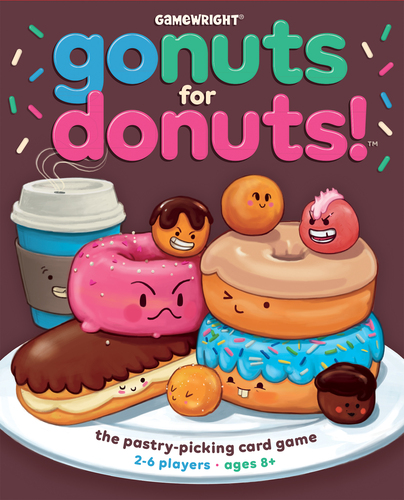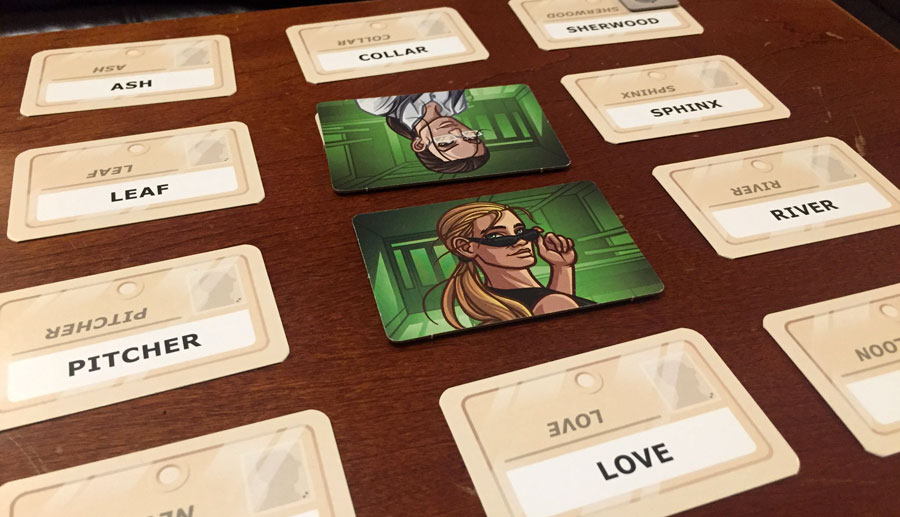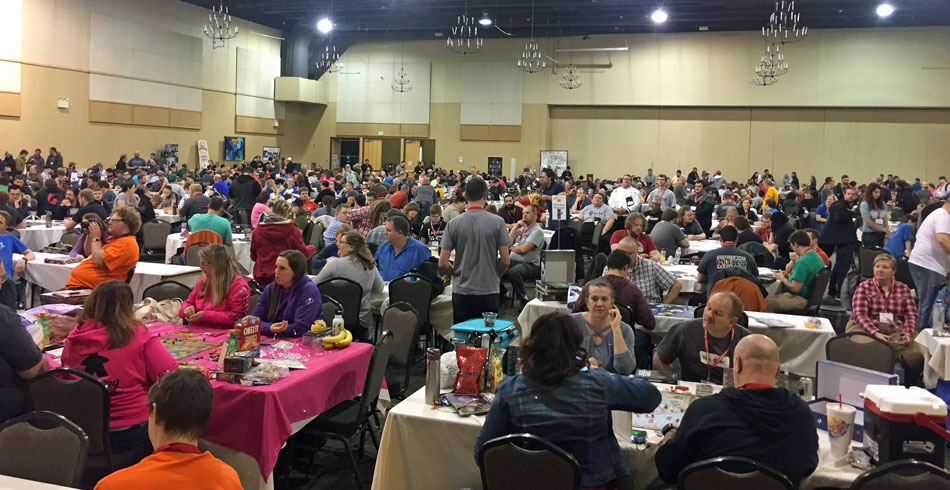Zoom In Barcelona Board Game Review
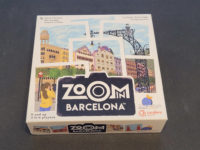
Barcelona, the city of dragons, is known for its art, architecture and yes its dragons.
Scattered throughout the city are over 400 dragons in both the architecture and artwork. The city is dotted with amazing structures like the fantastical Sagrada Família church and other modernist landmarks designed by Antoni Gaudí.
In Zoom in Barcelona, from Blue Orange Games, players race around the city on foot, bikes, scooters, cabs and buses, taking pictures of the beautiful landmarks and the skyline in an effort to win the coveted photography contest. The player who does this the best wins.
How to play Zoom In Barcelona
Setup:
To setup Zoom in Barcelona, players take the 8 different Skyline tiles, placing a number of them, equal to the number of players minus 1, on the indicated spaces around the central board.
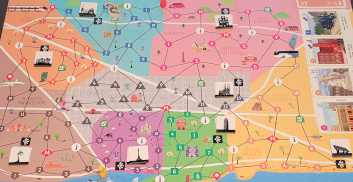
Players then shuffle the Transportation deck and deal 3 cards to each player face down. The remainder is placed in a face down draw pile near the board. Players shuffle the Landmark deck and place 4 cards face up on the Judge’s area on the board. The remainder creates a draw pile which is placed near the board face down.
Next, players shuffle the 6 Theme tiles and draw 2 randomly to place in the indicated spots on the board. These are bonus tiles for Landmark photos taken throughout the game.
Players now shuffle the 6 Camera boards and deal one to each player. Players take a pawn, cube, and Zoom Selector token in the color of their choice. Their starting location is indicated on their Camera board and they place their pawn there.
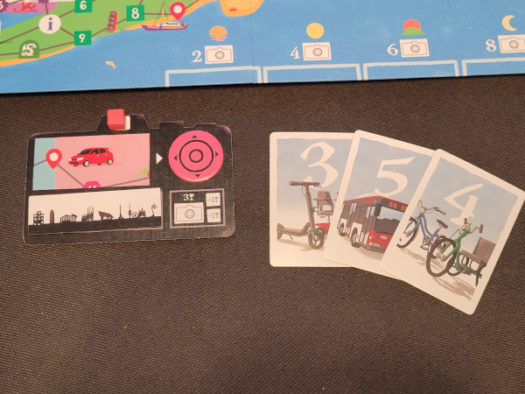
Next, draw a random Landmark card and place the Dragon token on its lair space in the corresponding area of the drawn card. Then discard the Landmark card.
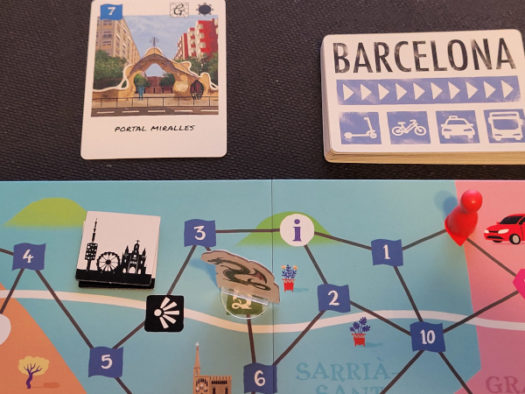
With that, players are ready to begin. The player who most recently took a picture will be the first player.
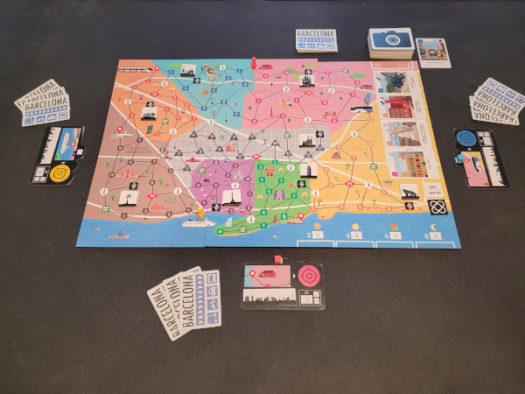
Gameplay:
The game consists of several rounds when players take turns moving and taking an action.
Movement happens in one of two ways. A player may walk, moving their pawn up to 2 spaces. Or a player may use a Transportation card to move up to the number of spaces indicated on the card. Note: players will not draw a new Transportation card at this point and a player may not end their movement where another player’s pawn is.
Next the player performs an action which can include taking a photo, visiting an Information Point, or taking the Metro.
Players take photos of Landmarks, Skyline Buildings and the Dragon by being on the exact point on the board or by using their Zoom token. Note the Zoom token is part of the advance game only, which I will explain later.
There are 86 Landmark locations on the board broken down into 8 areas, indicated by shape and color. Locations within the areas each have a number. For example the location in the above photo is in the blue flag area and is location number 7. These same areas and numbers can be found on the Judges’ Landmark photo cards. If the player is in the correct spot, they may take the corresponding Landmark card from the Judge’s area. The player then draws a new card to replace the one just taken.
Players mark the Skyline building locations with a special icon and have the specific building token next to it. When a player is on one of the 8 spots, they take the token only if they have not already taken one of that type and if there’s one available to take.
Lastly, a player that takes a picture of the Dragon at one of its 8 dragon lairs can take one of the following bonus actions.
- Take an available Landmark photo from the Judge’s area.
- Take any available Skyline tokens.
- Refresh all the Landmark photos in the Judge’s area.
After taking the photo of the Dragon, the player draws a new Landmark card, noting the area (color and symbol), and placing the Dragon in the corresponding lair, discarding the card afterwards.
There are 2 additional spots on the board where a player may end their movement. First is the Information Point where a player draws back up to 3 Transportation cards into their hand. Second, a player may enter the Metro where a player then moves their token to another Metro location on the board for free.
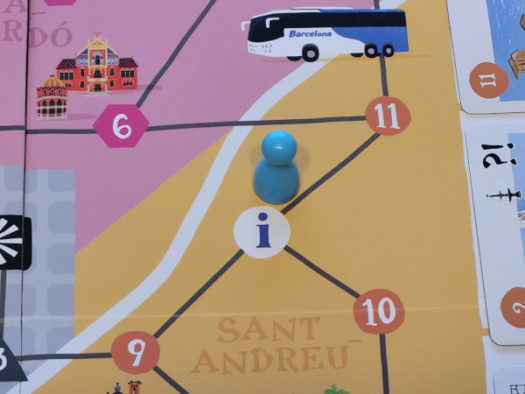
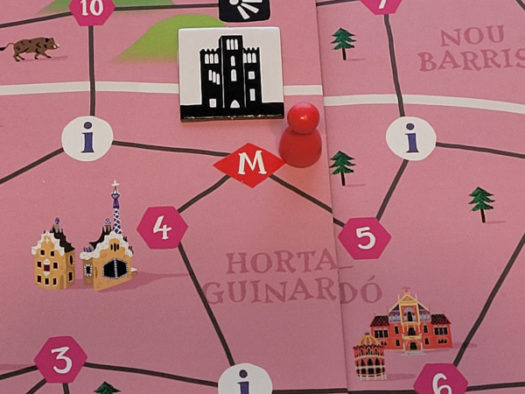
Players continue taking turns until one player takes their 8th Landmark card. The game then ends immediately and players tally their scores.
Scoring:
Players score 3 points per Landmark photo they take. If the Landmark photo has 1 or 2 of the special Theme icons from the 2 selected during setup, they earn 1 extra point per matching icon.
Players also score a number of points based on how many Skyline photos they’ve taken over the course of the game. For example, Beth took 5 Skyline photos and receives 15 points.
The player with the highest score wins.
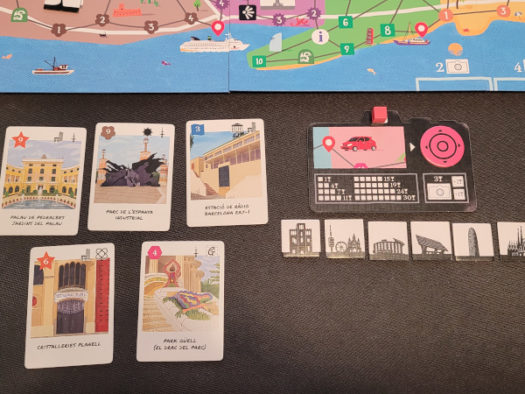
Variants:
As I mentioned above, there are a few variants that make the game a little more difficult and add some variety.
First, players can use Zoom tokens to be able to take pictures from a distance. For each space away from the photo location they use 1 Zoom point. Players keep track of how many Zoom points they’ve used by rotating the Zoom token on their player board. Once they’ve used all 3 Zoom points, they can no longer use this feature.
Next, are the City Skyline tokens. Each player will randomly receive one at the beginning of the game. The buildings on the token are ordered randomly and players only score those buildings grouped in the correct order. For example, Beth has 3 tokens in the correct order and another 2 in the correct order. She receives 7 and 4 points accordingly.
Finally, players may use the Natural Light variant. In this variant, players have to take into account the lighting of their photos and are only be able to score their Landmark photos if they’ve progressed far enough along the track.
The Natural Light track is created during setup by drawing 4 additional Landmark cards and placing them at the bottom of the board. Each player takes the cube that matches their player color and places it next to the first card.
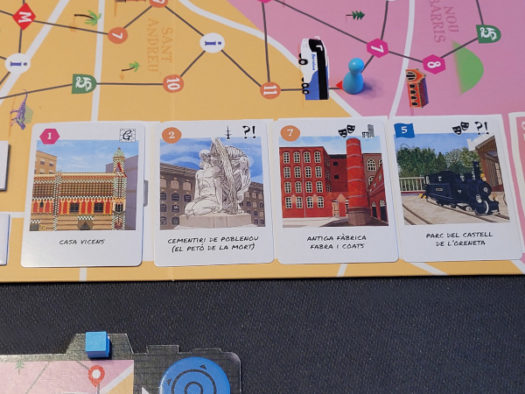
In order to advance on this track, players go to the indicated locations then advance their cube. At the end of the game, a player is only be able to score 2 cards if they’re on the first location of the track, 4 if they’re on the second, 6 if they’re on the third and all 8 if they’re on the last location.
The Breakdown
Theme and Mechanics:
Who wouldn’t love to go on a vacation to the amazing city of Barcelona? The culture, artwork and architecture is a treasure to behold. Zoom In Barcelona captures that feeling in a simple game that’s fun for the whole family.
The game mechanics include moving, action selection and set collecting. The three work really well together without overcomplicating things. The rushed feeling you get throughout the game matches the theme of competing in a photo contest which is all brought to life with the amazing artwork.
Flow:
The game flows really well. Turns are fast and the decisions are fairly simple. There’s a good amount of player interaction as you race to get Landmark and Skyline photos before the other players. But not so much that you feel that you’ve lost the game if you miss out on one.
The Dragon is the real equalizer, if you’re close enough to take advantage of it. Being able to grab a photo without having to be in the exact location can help players catch up after getting behind.
There are multiple paths to victory, so the person who gets their 8th Landmark photo isn’t necessarily going to be the winner. String together a nice skyline photo and you’ll be sitting pretty.
Accessibility:
This is an easy game for the whole family to play. The rules are straightforward and it has a low learning and teaching curve. All ages of my family (from 7-14) were able to pick up on this one and have a good time playing it. The advance rules do make it a little harder for the younger ones, but it’s simple enough to play without those rules.
I would definitely call this a gateway game as it could be used to teach new gamers concepts like set and action selection.
Production Value:
Zoom In Barcelona also has good production value. It’s not quite as good as some of Blue Orange Games’ other titles, which makes me wonder if it has something to do with their partnership on this one, but overall it’s solid and looks great on the table.
The artwork is fantastic. Artists Craig Petersen and Sophie Wainwright did a good job of capturing the beauty of the city, while still creating it in a playful game art style. The Landmark cards are where this really comes through so it’s fun to get as many as you can. And the fact that there are 86 locations means that you won’t see them all in one game.
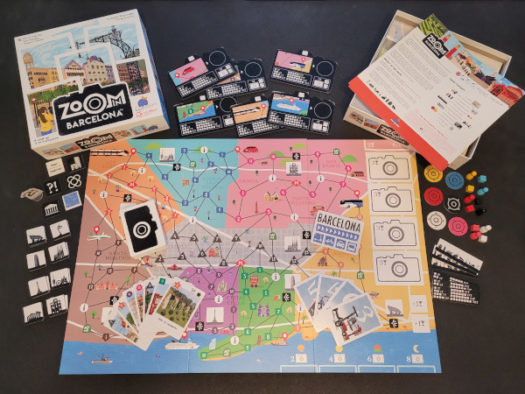
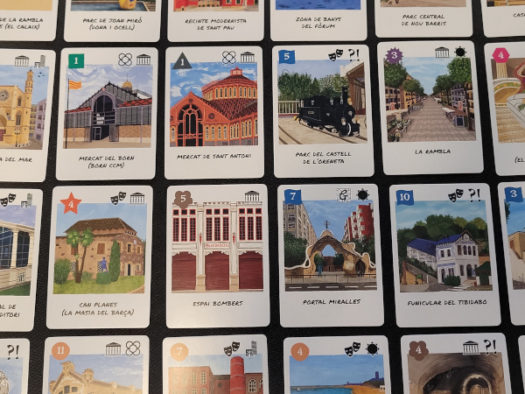
Side note: The dragon artwork reminds me of Trogdor from Homestar Runner.
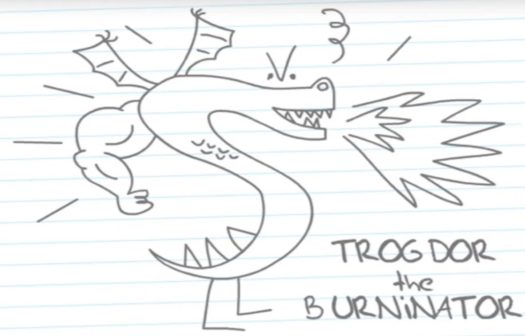
How does Zoom In Barcelona score on our “Let’s Play Again” game meter?
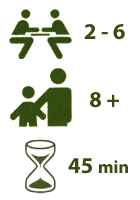 Zoom In Barcelona ranks medium on our “let’s play again” game meter.
Zoom In Barcelona ranks medium on our “let’s play again” game meter.
I love the fact that it can play 6 players, which includes my whole family. However it’s a pretty light game and we’re typically looking for something with just a little more meat on its bones.
That being said, my wife would probably rank it higher as she likes the lighter games—and as I said before, it plays six which allows for a larger gaming group.
About the Author
Dane is an Advertising and Layout Manager for a national magazine by day and a husband, father of four, and board gamer by night (and mornings). He has a passion for board games and believes board games help bring families closer together while providing kids a unique way to learn many diverse skills. And he thinks they’re downright fun!!!
The Board Game Family would like to thank Blue Orange Games for a review copy of Zoom In Barcelona.



